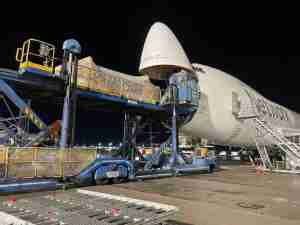Japan is preparing for its second typhoon in a week, with airline companies canceling flights and rail operators halting some operations.
Typhoon Lan is forecast to make landfall Tuesday in central Japan near Osaka, the country’s second largest metropolitan area, triggering travel disruptions just as domestic travelers start to make their way home after an annual holiday break. The Japan Meteorological Agency has called for precautions against heavy rain, mudslides and strong winds.
Typhoons are becoming more frequent and severe, causing factories to halt production in addition to the usual disruptions to transportation. At least two people were killed last year when a powerful system passed through Tokyo. Much of city was already covered in rain and fog on Monday.
A level 3 evacuation order — level 5 being the highest — was issued to some 26,000 elderly residents in a town in Wakayama Prefecture due to concerns of heavy rains causing landslides, NHK reported. The Universal Studios Japan theme park in Osaka will be closed Tuesday.
Japan Airlines Co. and ANA Holdings Inc. announced flight disruptions, with JAL canceling more than 250 flights for Monday and Tuesday.
Regional operators of Japan’s high-speed trains, Central Japan Railway Co. and West Japan Railway Co., said bullet trains will be partially suspended Tuesday, and delays and suspensions were likely on Monday and Wednesday as well. Central Japan Railway said service will be halted Tuesday between Osaka and Nagoya.
Toyota Motor Corp., Mitsubishi Motors Corp., Honda Motor Co. and Suzuki Motor Corp. said operations won’t be affected by the typhoon because their manufacturing plants are closed during the annual break.
As of Monday morning, Typhoon Lan was about 260 kilometers (162 miles) southwest of Japan’s Hachijojima island and moving northwest, according to the JMA. The storm, which is called Typhoon No. 7 in Japan, is packing maximum winds of about 144 kilometers per hour.
It’s expected to make landfall on a path across the center of Japan’s main island — a heavy industrial region with major automobile factories — before turning north toward Hokkaido.
Less than a week ago, Typhoon Khanun rolled through the region, brushing past Japan on its way to South Korea, forcing auto-plant closings, hundreds of flight cancellations and power outages.








